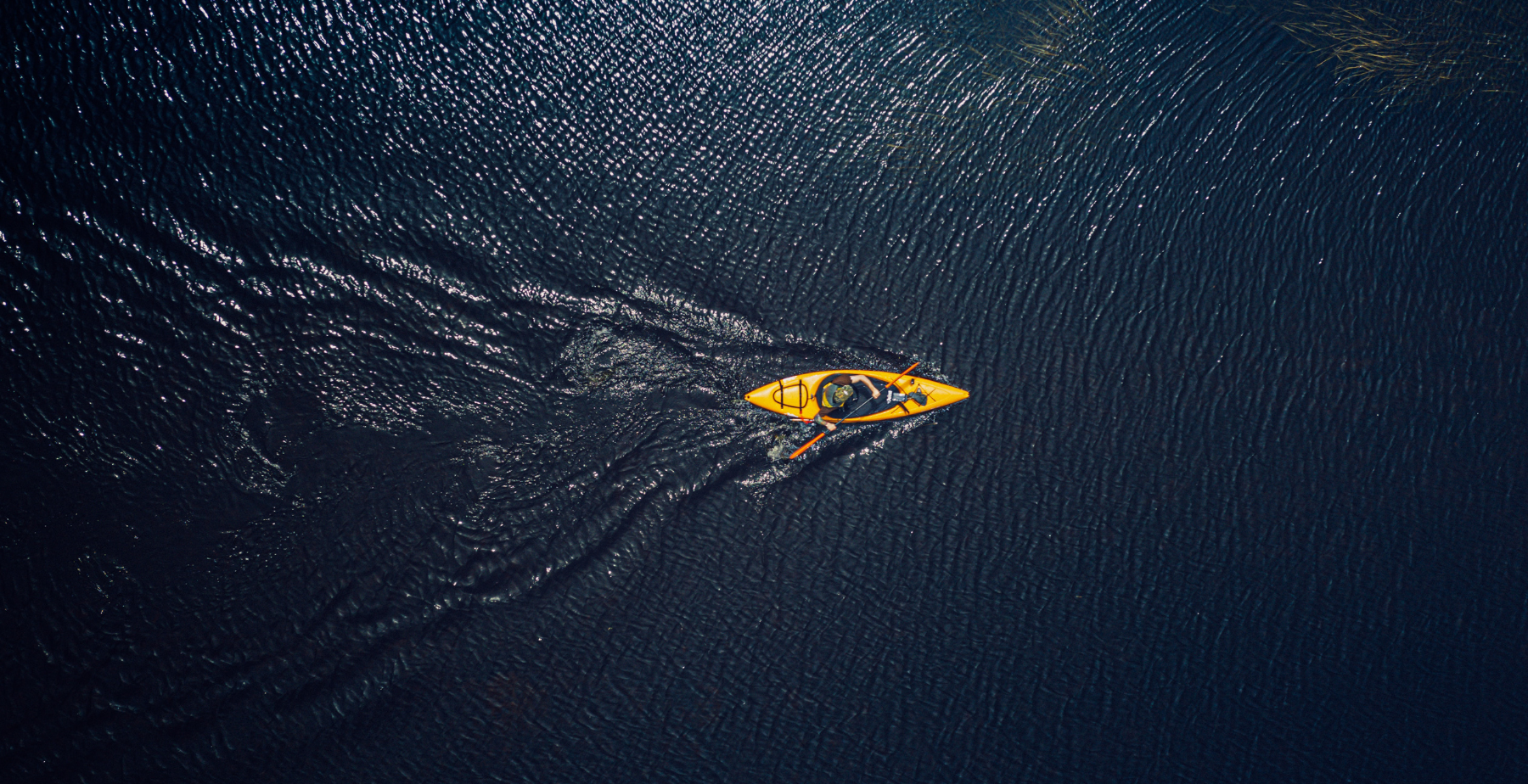
Paddle Paradise: The Best Waterways to Explore in Tennessee
It’s spring time in Tennessee!
What better way to take in the scenery than on the water? Let the tranquil waters of Tennessee reflect back Mother’s Natures beauty while you sit back and float along.
Got a kayak, canoe or paddle board you want to use this season? Tennessee houses some stunning clear rivers.
Here are 10 rivers to paddle with options ranging from calm rivers to challenging whitewater rapids and serene lakes:
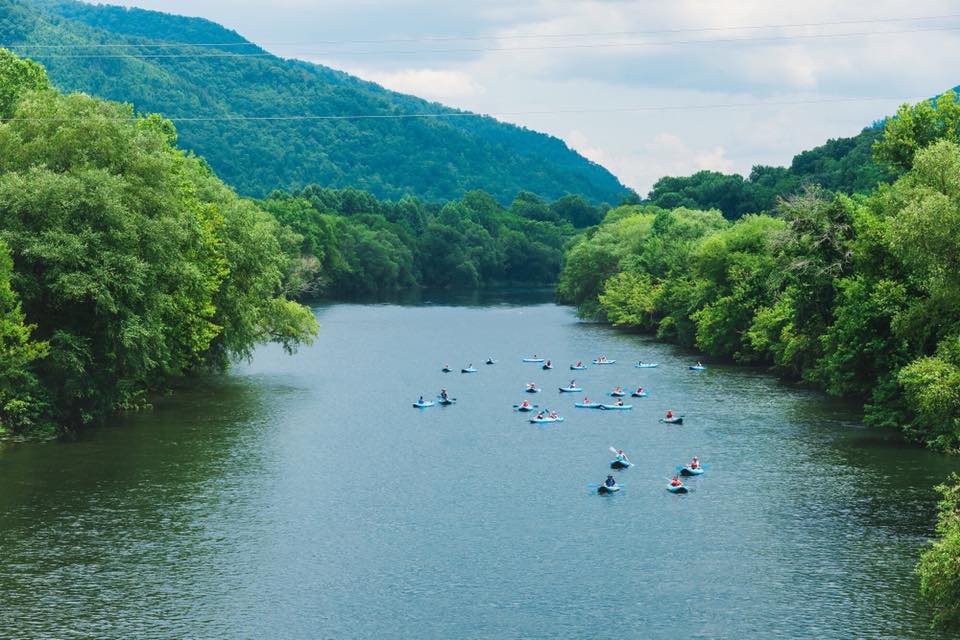
Photo via Visit Cleveland
1. Hiwassee River
The Hiwassee River originates in the mountains of North Carolina and flows westward into Tennessee, where it eventually joins the Tennessee River. Its course covers approximately 147 miles. A favorite among kayakers, this river entails a mix of calm stretches and exciting Class I and II rapids, making it suitable for both beginners and experienced paddlers with some sections featuring Class III and IV rapids.
Note: The flow of the Hiwassee River can vary significantly due to water release schedules from the Apalachia Dam.
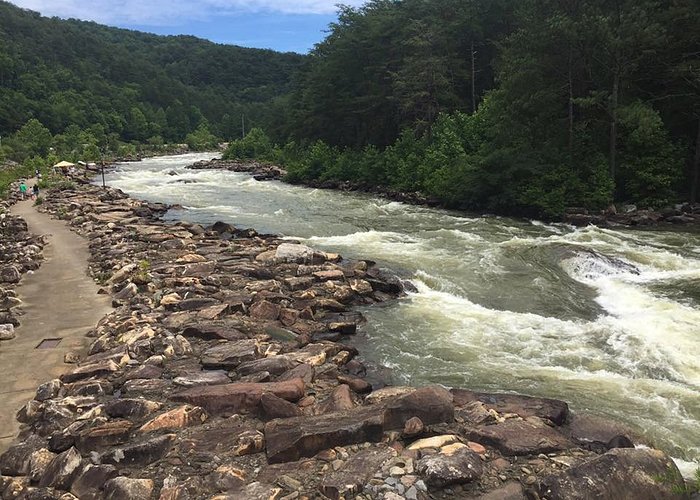
Photo via TripAdvisor
2. Ocoee River
If you’re looking for more excitement, the Ocoee River is known for its Class III and IV rapids. It flows through the scenic Cherokee National Forest and is one of the most popular whitewater kayaking destinations in the Southeast. The Ocoee River gained international recognition when it hosted the whitewater slalom events during the 1996 Summer Olympics held in Atlanta.
Some of the well-known rapids on the Ocoee River include “Grumpy’s,” “Broken Nose,” “Table Saw,” and “Diamond Splitter,” each offering unique challenges and adrenaline-pumping experiences.
The Ocoee River is situated near other attractions like the Great Smoky Mountains National Park, the Appalachian Trail, and the charming town of Chattanooga, making it an excellent destination for outdoor enthusiasts.
3. Caney Fork River
Part of Center Hill Lake, this river offers a mix of calm sections and Class I and II rapids. It’s known for its clear water and beautiful scenery, making it a popular spot for both recreational and fishing kayakers.
Drop in at the dam or at the boat ramps along the river. There are also a few vendors who offer canoes and kayaks rentals along with a shuttle to get to and from.
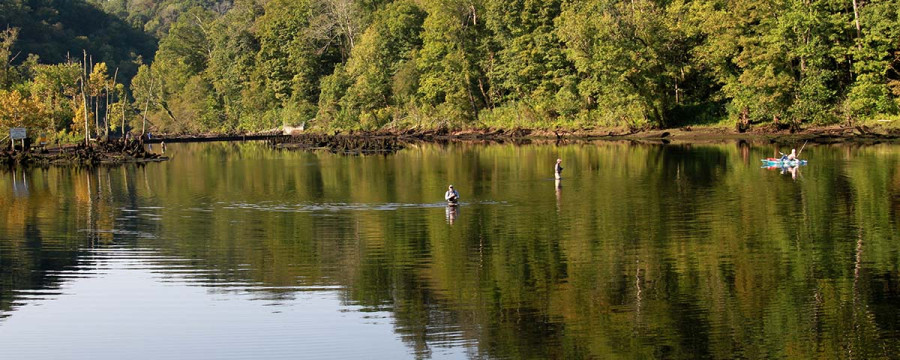
Photo via Adventure Anderson County
4. Clinch River
The Clinch River flows through the eastern part of Tennessee, primarily in the Appalachian region. It starts in Tazewell, Virginia, and enters Tennessee near the town of Bean Station, continuing southwest through the state before eventually joining the Tennessee River. It is known for its clean water and as a peaceful and scenic river that’s ideal for flatwater kayaking and wildlife watching. Several dams along the Clinch River create reservoirs, including Norris Lake and Melton Hill Lake.

Photo via Christian Bowen
5. Chickamauga Lake
Located near Chattanooga, Chickamauga Lake offers a peaceful kayaking experience with opportunities for fishing and birdwatching. It’s a large reservoir with plenty of coves and inlets to explore. In fact, the lake covers approximately 36,240 acres with over 810 miles of shoreline, making it one of the largest reservoirs in Tennessee.
Also known as a popular fishing destination, this lake hosts several tournaments attracting professional and amateur anglers. The lake has gained a reputation for producing large bass, and it has been the site of several record catches.
The nearby city of Chattanooga offers a wide range of attractions, including the Tennessee Aquarium, Rock City, and Lookout Mountain, making Chickamauga Lake a great base for exploring the region.
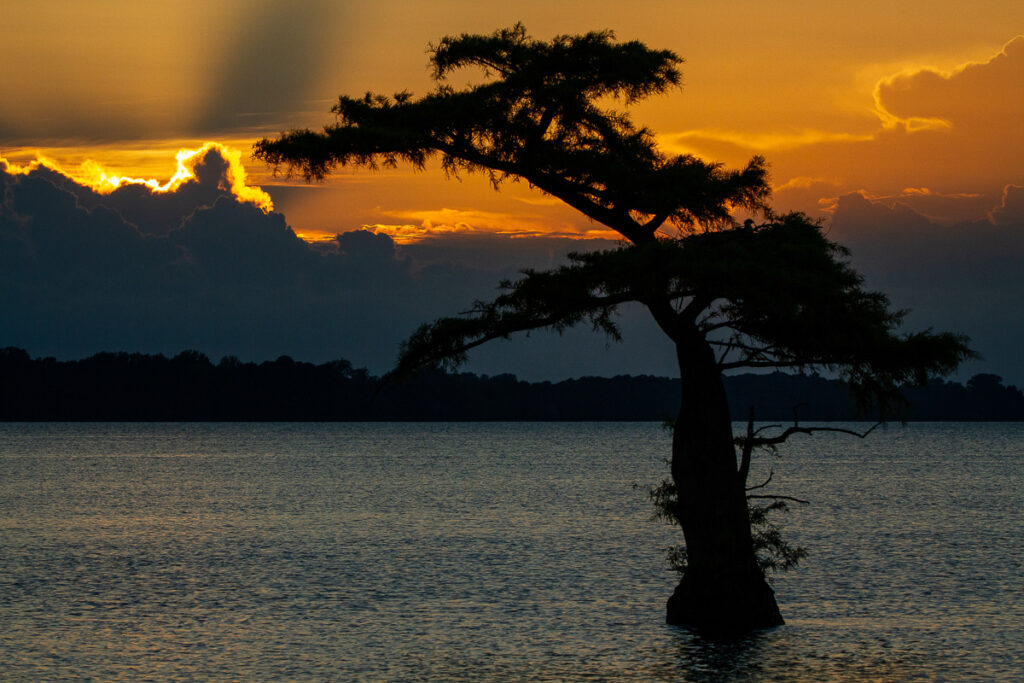
Photo: Joshua Cotten
6. Reelfoot Lake
Reelfoot Lake in northwest Tennessee is a unique destination with cypress trees and abundant wildlife. It’s an excellent place for kayaking, fishing and birding. This lake is full of rich history and interesting lore. It was actually formed by a series of powerful earthquakes that struck the region in the early 19th century, most notably the New Madrid earthquakes of 1811 – 1812.
Like most places in Tennessee, the lake area was also used by Native American tribes before European settlement. It was even named in honor of a Chickasaw chief. Additionally, the lake played a role in the Underground Railroad during the Civil War era.

Photo via Discover Bristol
7. South Holston Lake
This lake in northeastern Tennessee is surrounded by the Cherokee National Forest and offers a serene kayaking experience. It’s a great spot for both beginners and experienced paddlers. The lake’s location in the Appalachian region means it is surrounded by diverse geological features, including rolling hills, forests, and limestone bluffs, which add to its natural beauty.
The South Holston River, which feeds the lake, is stocked with rainbow and brown trout, making it a popular destination for fly fishing. The river’s cold, clear waters create ideal conditions for trout.
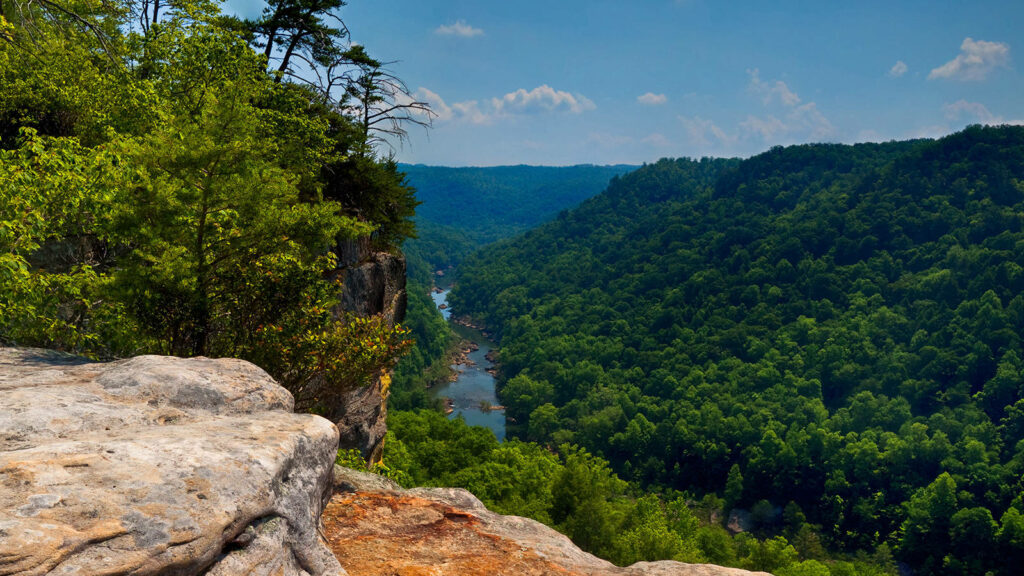
Photo via National Parks Conservation Association
8. Big South Fork National River
This park spans the Tennessee-Kentucky border and covers over 125,000 acres of land, making it one of the largest protected areas in the Southeastern United States. The river has numerous rapids and challenging sections for paddlers of various skill levels.
The area has a rich cultural history, with evidence of Native American habitation dating back thousands of years. The park has also been designated as an International Dark Sky Park, making it an ideal location for stargazing and astronomy enthusiasts. On clear nights, you can enjoy breathtaking views of the night sky.
If you care to jump ship and explore, you may be interested in the O&W Bridge area, a popular spot for rock climbing. Several climbers visit the park every year to tackle its sandstone cliffs and boulders.
Big South Fork is also a popular destination for horseback riding, with over 180 miles of equestrian trails. It’s considered one of the best places for horseback riding in the Eastern United States.
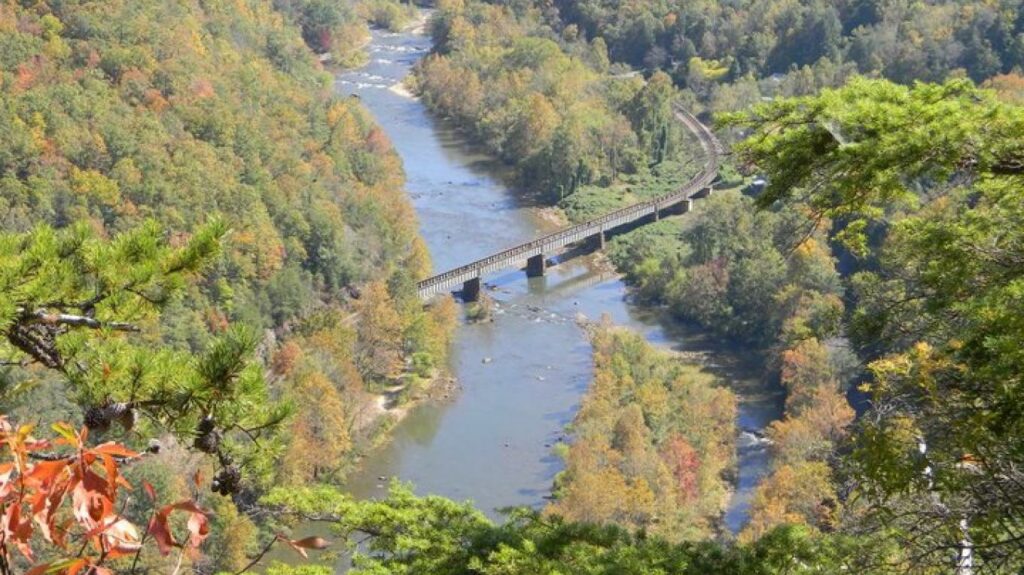
Photo via Tennessee River Valley
9. Nolichucky River
The Nolichucky River (“Rushing Water”as given by the Cherokee) has both calm stretches and Class III and IV rapids, making it suitable for kayakers of various skill levels. It flows through a scenic gorge in the Cherokee National Forest.
Some of the famous rapids on the Nolichucky include “Quarter Mile,” “On the Rocks,” “Rooster Tail,” and “Deliverance.” These rapids offer a thrilling adventure for whitewater enthusiasts. The Nolichucky River is also known for “The Blue Hole,” a deep, clear pool of water that is a popular spot for swimming and cooling off during the summer months.
The Nolichucky River is located in close proximity to the Great Smoky Mountains National Park, offering visitors the opportunity to combine their river adventures with visits to this iconic national park.
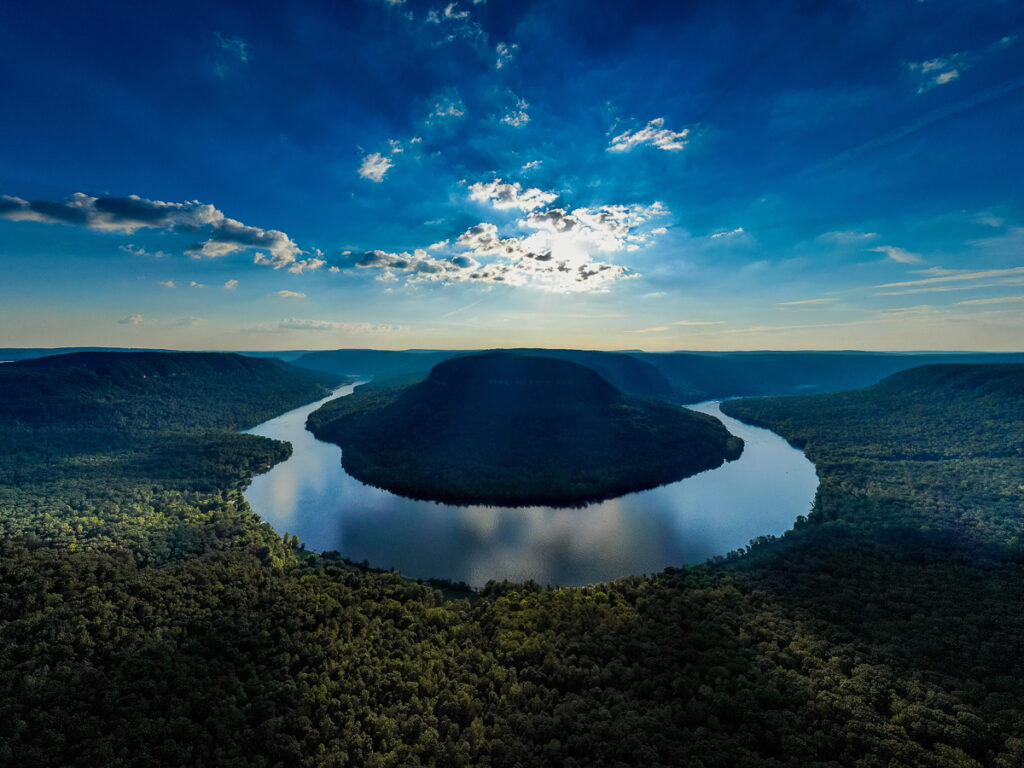
10. Tennessee River
The Tennessee River stretches approximately 652 miles from its headwaters in eastern Tennessee to its confluence with the Ohio River in western Kentucky. It is fed by numerous tributaries, including the Clinch, Holston, and French Broad Rivers. A series of dams and locks, operated by the TVA, make it navigable for hundreds of miles.
The river’s name comes from the Cherokee village of “Tanasie,” which was located near the river’s mouth. Like others, this river is rich with history. It played a vital role during the American Civil War, serving as a transportation route for both Union and Confederate forces. Battles, such as the Battle of Shiloh, were fought near its banks.
During the 19th century, steamboats were a common sight on the Tennessee River, transporting goods and passengers. Today, paddlewheel riverboats continue to offer scenic cruises for tourists.
The Tennessee River offers a long and diverse paddling experience, with various sections and access points along its course. You can explore both calm stretches and sections with moderate currents.
Remember to check local regulations, water levels, and weather conditions before heading out for kayaking in Tennessee. Our weather can be temperamental at times.
Additionally, always ensure you have the necessary safety equipment and follow safety guidelines to have an enjoyable and safe kayaking experience. Don’t forget your lifejacket! You will get a ticket if you don’t have one.
Looking for more amazing places to explore?


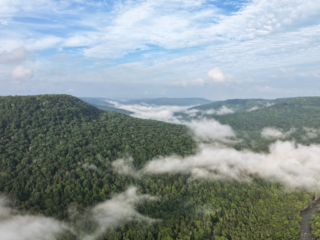
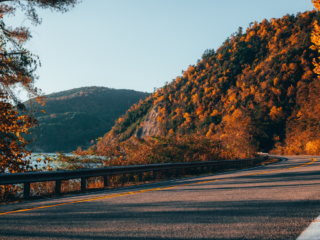

Leave a Reply